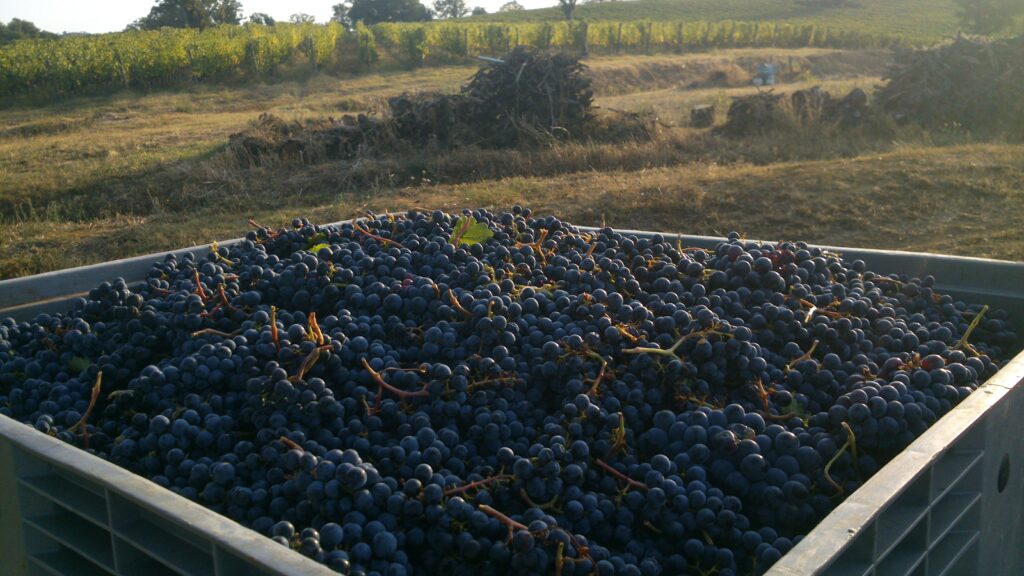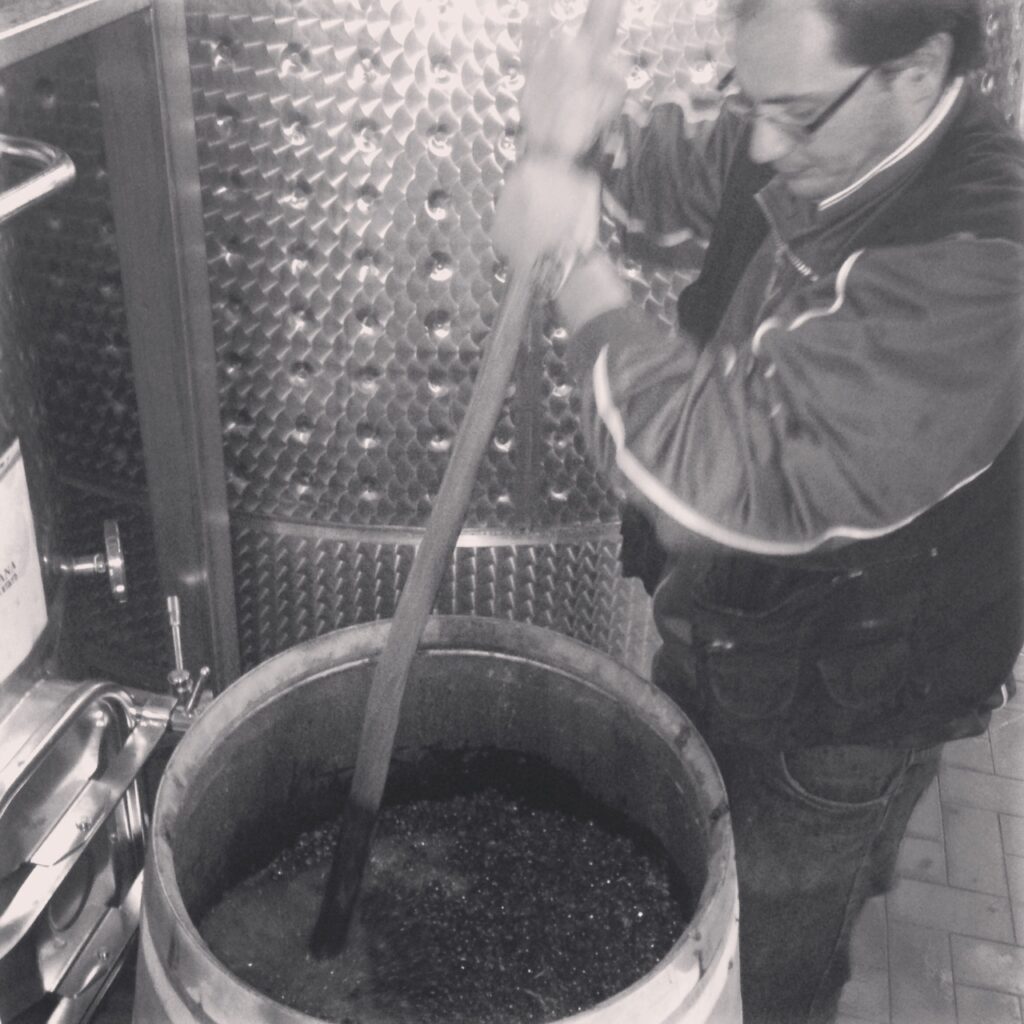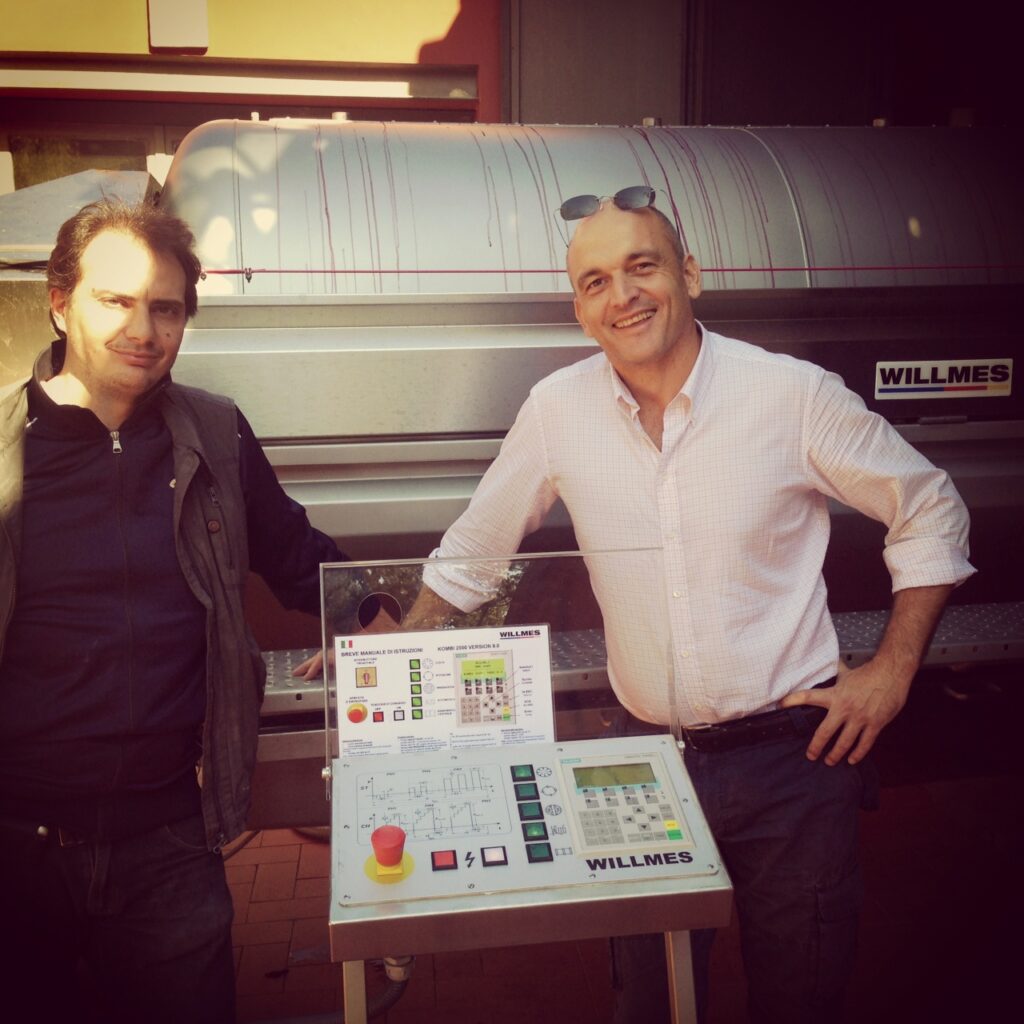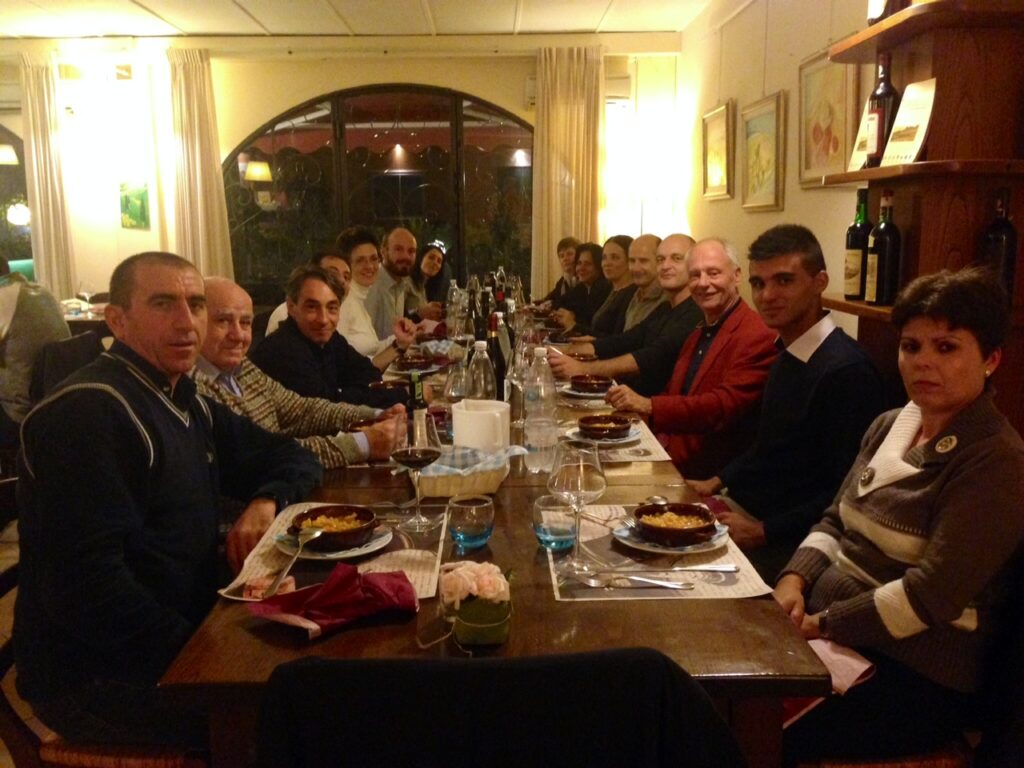The frenetic period of the harvest has been over now for a month so even if not all the malolactic fermentations are done by now it is time to look back a bit!
The 2013 vintage can be described as a classic vintage with cooler temperatures compared to the average of the last decade. This year weather conditions have been characterized by a cold winter and a particularly long and wet spring. Due to this cold first quarter of the year Bud-break, fruit development and the whole vegetation has been two weeks behind. As the last summers have been very hot and dry this additional rain helped to avoid to much water stress in the vineyards in Chianti Classico where we don’t irrigate at all. Also in Maremma we didn’t irrigate at all this year! Even if the whole vegetation was two weeks behind the normal schedule we were very happy about the extra-rain. Summer has been pleasantly mild with only one week of hot days and a few rainy afternoons especially in August. In the middle of August the development and maturation of the grapes was still two weeks behind. While on average harvest starts in the last week of August this year we only started to pick our Merlot in Maremma on the 06.09.2013 – 10 to 14 days behind average. Thanks to a strong team we managed to harvest all the Merlot in one day. The long and slow maturation period helped to harvest the best Merlot grapes we ever produced in our Maremma vineyards. Next were Syrah, Cabernet Franc and Alicante and our two “secret grape varieties” from Maremma. Now Wines are elegant and balanced with beautiful color and fresh fruit notes without raisins or overripe notes along with a good acidity.
The Harvest in Chianti started on the 23 of September with our small plot of Merlot that goes in our Nittardi Riserva. Our first impressions are very good, thanks to a slow and steady maturation the wine has a beautiful elegance, great fruit intensity and moderate alcohol.
After this first very successful period of the harvest we had to wait a few days for the aromatic and phenolic ripeness of our Sangiovese (Chianti and Maremma), Cabernet Sauvignon and Petit Verdot grapes. Unfortunately two days of strong rain, in general cloudy and shorter days and low temperatures from the end of September onwards didn’t fast up the ripeness. The thin skins of our Sangiovese suffered a bit because of the rain, but thanks of a very careful grape and berry selection we produced in general very satisfying wines with interesting differences between the different terroirs. Sangiovese is not an easy grape variety, it can be very picky… We are especially satisfied by the Sangiovese coming from our vineyards in Chianti. While trying – also with our consultants Carlo Ferrini and Gioia Cresti – berries from the remaining vineyard plots of Petit Verdot and Cabernet Sauvignon we realized that the Petit Verdot was earlier ripe for harvest than the Cabernet while normally it is the other way around. We finished the harvest on the 15.10.2013, an unusual late date.
While tasting everything that is in the cellar the first impressions are that Merlot, Syrah, Alicante and Cabernet Franc are outstanding! Cabernet Sauvignon & Petit Verdot very good. Sangiovese very good, with higher acidity and less alcohol than in the last years (13 on average).
In the cellar everything was fermented in our temperature controlled stainless steel tanks besides some “secret varieties” that were fermented in an open barriques. This year we used for the first time our new pneumatic press, that worked very well and helped us to produce very good pressed wines that can be used to give some extra structure and acidity to the final blends. Also for the first time this year we used micro-oxygenation during and after the fermentation mainly to stabilize the color, aromatic components, Anthocyanin and Phenolics. After this first experiments we believe that this technique can help in challenging vintages as 2013 if it is used moderately and with the right precautions.
To conclude we believe that this will be an outstanding-very good vintage for early ripening grape varieties as Merlot and Syrah and an very good-good vintage for later ripening varieties as Sangiovese and Cabernet Sauvignon. We are happy about this “old school vintage” because we will have wines with moderate alcohol and a lively acidity.




